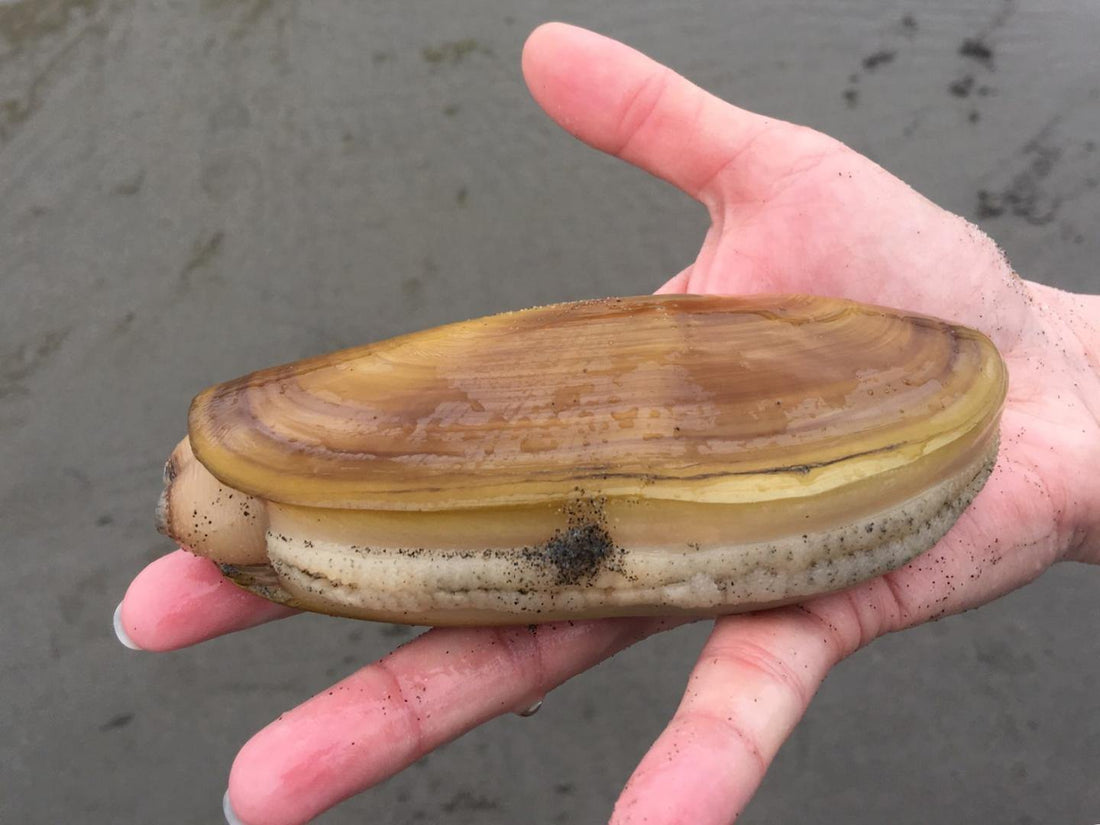Razor clam diggers may be able to return to Long Beach for a three-day opening beginning Sept. 27, pending favorable marine toxin results later this month.
The upcoming dig is proposed for the following dates and morning low tides:
- Sept. 27, Friday, 5:52 a.m. -0.9, Long Beach only
- Sept. 28, Saturday, 6:36 a.m. -0.8, Long Beach only
- Sept. 29, Sunday, 7:19 am -0.6, Long Beach only
Final approval of the scheduled opening will depend on whether results of marine toxin tests show the clams are safe to eat. No digging would be allowed after noon.
The Pacific razor clam typically can grow to a length of three to six inches and is one of the most sought after shellfish in the state of Washington. Recreational digging for razor clams is one of the most popular fisheries and is truly a family sport. All you need is a clam shovel or tube, a container to put your clams in like a clam net, bag or bucket and a clam license. During the fall and winter digs when low tides occur at night, clam diggers brave the elements to dig by lantern or flashlight. There are numerous recipes for cooking razor clams. They are great in chowder, clam fritters, fried clams, clam dip and many more.
Bag Limit
Diggers must retain the first 15 razor clams harvested regardless of clam size or condition. Diggers may only retain one daily limit of shellfish. Diggers may not harvest any part of another person’s daily limit. Razor clams may not be returned to the beach.
Allowable Harvesting Gear
Razor clams may be taken by hand, shovel, or tube with a minimum outside diameter of 4" or (4" x 3" if elliptical). Although each digger must use a separate container to store collected razor clams, diggers may share digging equipment.
Where To Dig
The Washington Department of Fish and Wildlife (WDFW) divides the harvest areas into five major management zones:
- Long Beach from the Columbia River north to the mouth of the Willapa Bay
- Twin Harbors from Willapa Bay north to the south jetty at the mouth of Grays Harbor
- Copalis Beach from the north jetty at the mouth of Grays Harbor to the Copalis River
- Mocrocks from the Copalis River to the south boundary of the Quinault Indian Reservation
- Kalaloch from the South Beach campground north to ONP Beach Trail 3.
Be sure to check current conditions & latest Domoic Acid Levels at these beaches before heading out.
